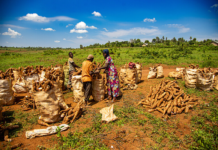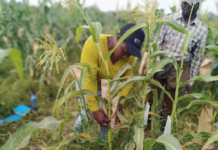Much of African land otherwise suitable for agriculture is nutrient deficient, which has financial and health implications for farmers and citizens. Landscape restoration essential for African agriculture relies on collaboration and conservation. Fortunately, the industry can significantly benefit from using the proper methods.
Why Is Restoration Essential for Agriculture in Africa?
Africa’s natural landscape needs restoration because its agriculture sector has local and global impacts on the economy and food security. Land can’t support crops due to poor farming practices and natural wear. Although Africa loses 3% of its annual GDP because of soil and nutrient depletion, the agricultural industry could prevent it by restoring and maintaining farmland.
The loss of usable farmland has also led to issues between landowners because it causes financial strain and tension in communities. Farmers must use landscape restoration methods to rebuild nutrients in the soil, improve relationships and strengthen their local economy.
Much African land is at risk of desertification because it doesn’t get proper nutrients or water, which puts the lifestyles of many citizens at risk. It particularly threatens the agriculture industry because it relies on stable and functional land for production to contribute to the economy and food security.
What Restoration Practices are Essential?
Essential restoration practices involve resource optimization and conservation. For example, water scarcity is a real issue around the continent. Farmers should limit their water usage since it isn’t a readily available resource for much of Africa. It’s crucial they tailor their methods to align with their specific land needs — nutrient and water increase — if they want to see results.
Dry farming is a practice that conserves natural resources while restoring soil integrity. It focuses on adding organic materials to improve soil moisture content and retention. Farmers can plant ground cover or mix their livestock’s manure with their farmland. Some professionals estimate having an extra 1% ncreases absorption to 20,000 gallons per acre of soil.
The introduction of trees into agriculture also restores African landscapes in a significant way. Farmer-managed natural regeneration focuses on the maintenance and renewal of trees to benefit soil fertility and increase resource yield. Farmers in Niger use the technique to annually produce over 500,000 extra tons of cereals, which positively impacts their economy and food security.
What Can Individual Farmers Do?
Restoring landscapes takes time and effort, so collaboration is essential for extensive change. They’re more likely to succeed when working together to overcome physical or financial barriers.
For example, most farmers in Africa don’t use machinery unless they have some sort of community rental program. Rentals can ease initial farming costs and make farming more profitable, boosting local economies and encouraging widespread adoption of agricultural restoration practices.
Benefits of Landscape Restoration in Africa
The African agriculture industry’s restoration of degraded landscapes benefits local communities and the global economy. On top of that, it helps save the limited space and resources available to African farmers.
Restored landscapes benefit Africa in many ways:
- Improves the climate: Sustainable agriculture practices and an increased number of trees and crops reduce carbon emissions and conserve critical natural resources.
- Reduces soil erosion: Restoring degraded land and conserving water usage protects soil from becoming eroded.
- Increases crop yield: Practices like dry farming create nutrient-dense soil, which makes crops produce more.
- Prevents flooding: Limited soil erosion and excess plant life are barriers against flooding.
- Provides economic opportunities: Increased yield and less material use contribute to a more significant profit margin for individual farmers.
- Restores local ecosystems: Conservation and restoration encourage plant growth and provide wildlife with excess resources to live off of.
Over 30 African governments have already restored 100 million hectares of land. While it’s not purely agricultural, the industry largely contributed to those efforts. Landscape restoration benefits economic growth, sustainable food production and future land resilience.
Effects of Landscape Restoration on African Agriculture
The African agriculture industry and individual landowners can work to bring life back into landscapes. It ensures a strong economy and provides many people with stable access to resources like food and water. Essential restoration practices benefit all of Africa.








